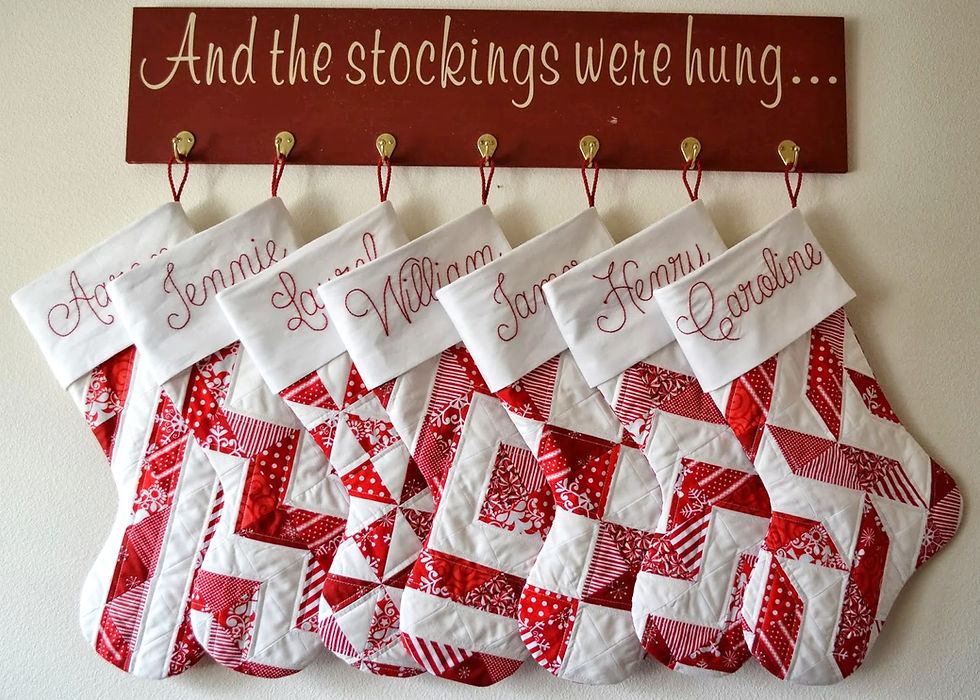The Harris Tote Bag – Multi-Size Sew and Sell PDF Pattern
- Susan

- Feb 22, 2016
- 3 min read
Updated: Aug 29

Perfect for beginners who want to create a stylish, functional bag while building their sewing skills. This downloadable pattern includes step-by-step instructions with full-color photos and plenty of helpful tips for successful bag making. The Harris Tote features a fully lined interior and a flat base for a beautifully structured shape, plus a roomy zippered pocket to keep your wallet and phone secure.
Fourteen pages of full-color, tutorial-style instructions, complete with detailed photos, will guide you in creating a professional-looking tote quickly. We love the Harris tweed used in the sample photos, but of course you can use just about any sturdy fabric you want and in two different sizes.
Approximate finished dimensions:
Small 12 x 10 inches (31 x 25 cm)
Large 14 x 12.5 inches (36 x 32 cm).
How to Sew with Tweed Like a Pro
Tweed is a classic fabric loved for its durability, warmth, and timeless texture. It’s a favorite for making structured bags, pouches, and home décor pieces. But as beautiful as it is, tweed can be a little tricky to work with—especially because of its tendency to fray and stretch. Don’t worry! With the right techniques, you can master sewing with tweed and achieve stunning, professional results for all your projects.
What Is Tweed Fabric?
Tweed is a rough, unfinished wool fabric with a slightly coarse (sometimes itchy) yet flexible texture. It’s traditionally woven in twill or herringbone patterns, giving it that signature rustic look. Loosely woven tweeds can fray easily, so stabilizing the fabric before and during construction is essential to avoid distortion.
Essential Tweed Sewing Tips:
1. Pre-Treat Your Fabric
Tweed often contains wool, which means it can shrink. Always pre-shrink before cutting by steam-pressing or dry-cleaning the fabric. Avoid washing unless the care instructions say it’s safe.
2. Finish Your Seams
Because tweed unravels quickly, seam finishing is a must. A zigzag stitch works for most projects, but an overlocked or serged finish is even better. For an exposed interior (such as in an unlined bag), bind seams with double-fold bias tape for a neat, professional look.
3. Stabilize Key Areas
Reinforce stress points like straps and handles with twill tape or interfacing.
For very loosely woven or handwoven tweeds, apply fusible tricot interfacing to stabilize the fabric and keep it from shifting.
4. Choose the Right Needle and Thread
Use a size 80/12 or 90/14 universal or sharp needle for medium tweeds; heavier tweeds may need a jeans needle.
Polyester or cotton-wrapped polyester thread is strong yet smooth for heavy-duty stitching.
5. Cut Carefully
Cut single layers instead of folding the fabric to avoid shifting and distortion. Use pattern weights and a rotary cutter for crisp edges.
6. Match Patterns
If your tweed has checks, plaids, or houndstooth, take time to match the pattern at seams. It makes your finished bag look high-end and professional.
7. Reduce Bulk
Grade and trim seam allowances, especially in corners and boxed bottoms. Press seams open with a clapper and plenty of steam to flatten them without crushing the texture.
8. Use Lining or Underlining
Most tweed bags benefit from a lining to hide seams, add structure, and protect the inside from fraying. For extra strength, underline with lightweight cotton to keep tweed from stretching or distorting.
9. Finish Hems and Edges Neatly
For raw edges, use hem tape or bias binding for a clean finish that prevents fraying over time.
Final Pressing Tips
Always use a press cloth and lots of steam. Press—don’t iron—to keep your tweed crisp without flattening its texture or stretching the weave.
With these techniques, tweed becomes a fantastic choice for stylish, durable bags and accessories. Take your time, stabilize as you go, and your handmade creations will have that rich, high-end look that never goes out of style.





























